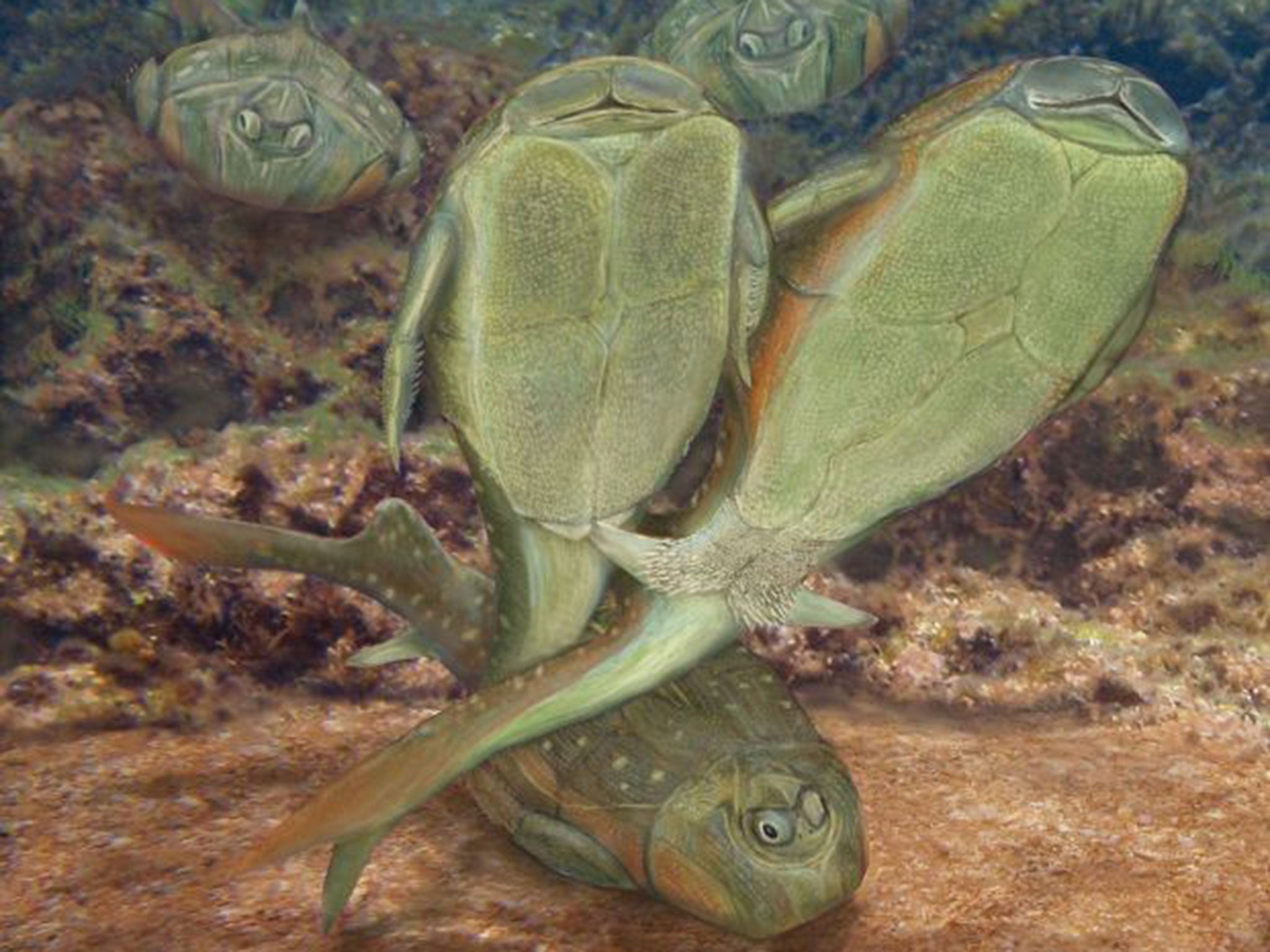The Independent's journalism is supported by our readers. When you purchase through links on our site, we may earn commission.
Ancient armoured fish first creatures to have sex
The prehistoric Microbrachius dicki copulated sideways in a Scottish lake

Two armoured fish dwelling in a Scottish lake were the first creatures to have sex, around 385 million years ago.
Scroll down for video
And forget missionary – this ancient couple copulated side-by-side, ensuring that the male could manoeuvre his large genitalia into just the right position.
Scientists have traced the history of vertebrate sexual intercourse back to a species of fish known as Microbrachius dicki. Microbrachius means “little arms” and refers to the genital limbs that locked male and female fish together when mating. And dicki means – that’s right, you guessed it.
The three-inch long placoderm (a prehistoric fish) is an early ancestor of humans that lived millions of years before fins evolved into legs.
A study of the creatures' fossils showed that in order to transfer sperm, males had grooved L-shaped claspers which were held in place by small paired bones on the female.
"We've solved this great mystery because they were there for mating, so that the male could position his claspers into the female genital area."
He added that the act of copulation was carried out sideways. "This enabled the males to manoeuvre their genital organs into the right position for mating,“ he said.
"With their arms interlocked, these fish looked more like they are square dancing the do-se-do rather than mating."
The discovery, published in the Nature journal implies that external fertilisation evolved from internal fertilisation involving sexual intercourse, and not the other way around. Most present-day bony fishes fertilise eggs outside their bodies.
The findings also highlight the importance of placoderms in vertebrate evolution.
Professor Lang said: “Placoderms were once thought to be a dead-end group with no live relatives, but recent studies show that our own evolution is deeply rooted in placoderms, and that many of the features we have, such as jaws, teeth and paired limbs, first originated with this group of fishes.
“Now, we reveal they gave us the intimate act of sexual intercourse as well.”
Additional reporting by PA
Join our commenting forum
Join thought-provoking conversations, follow other Independent readers and see their replies
Comments